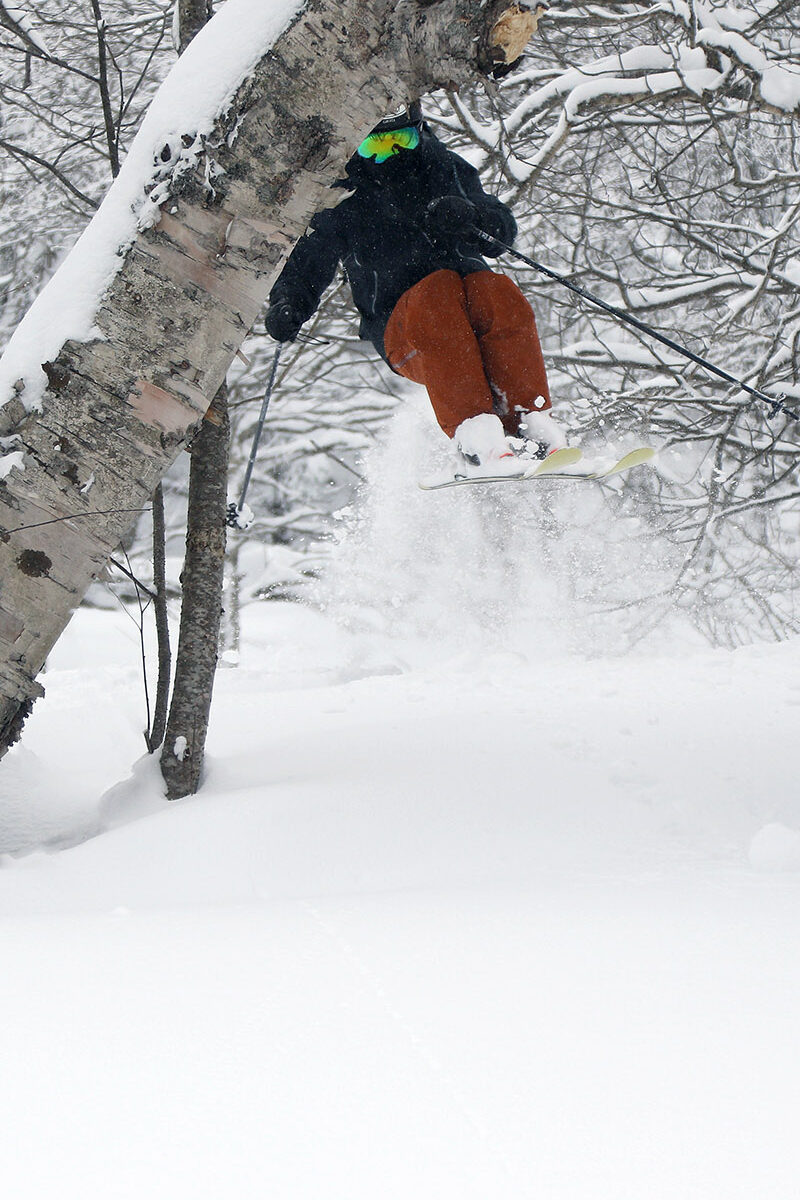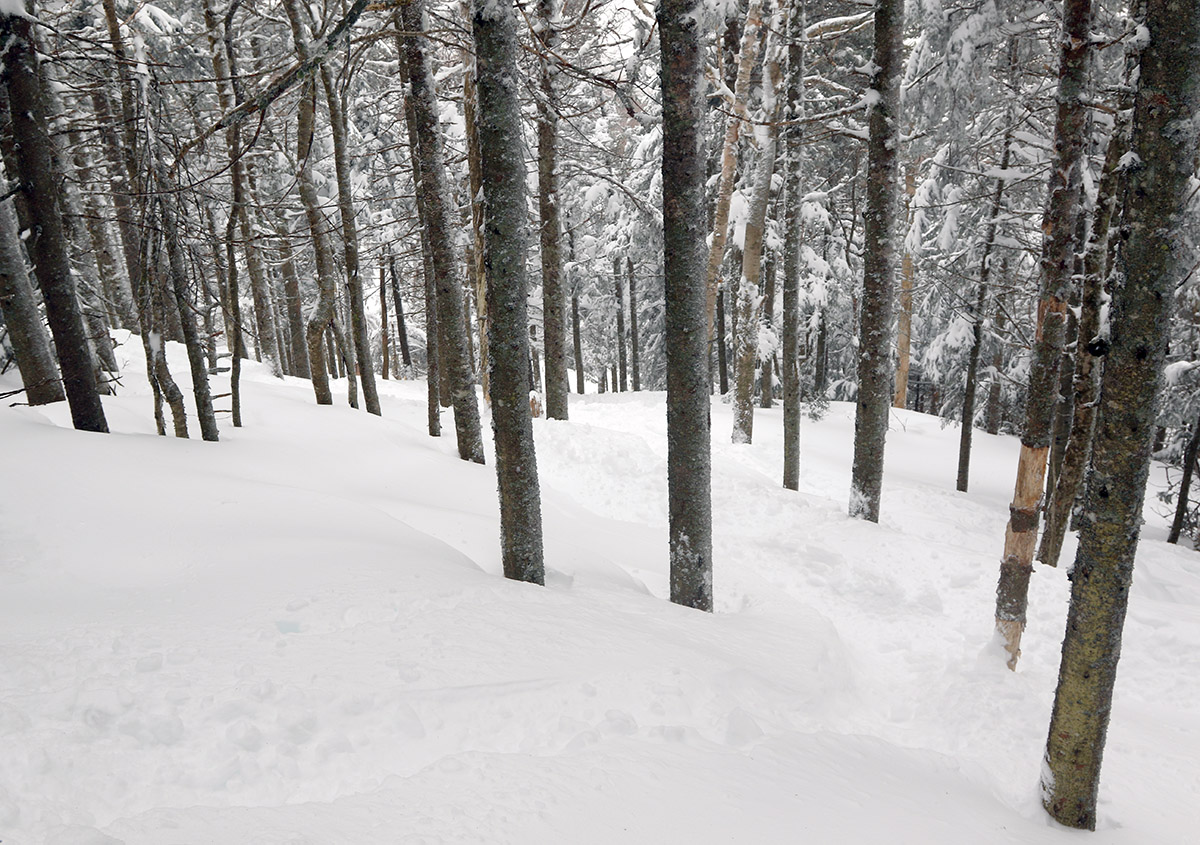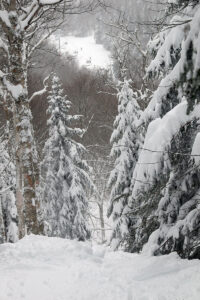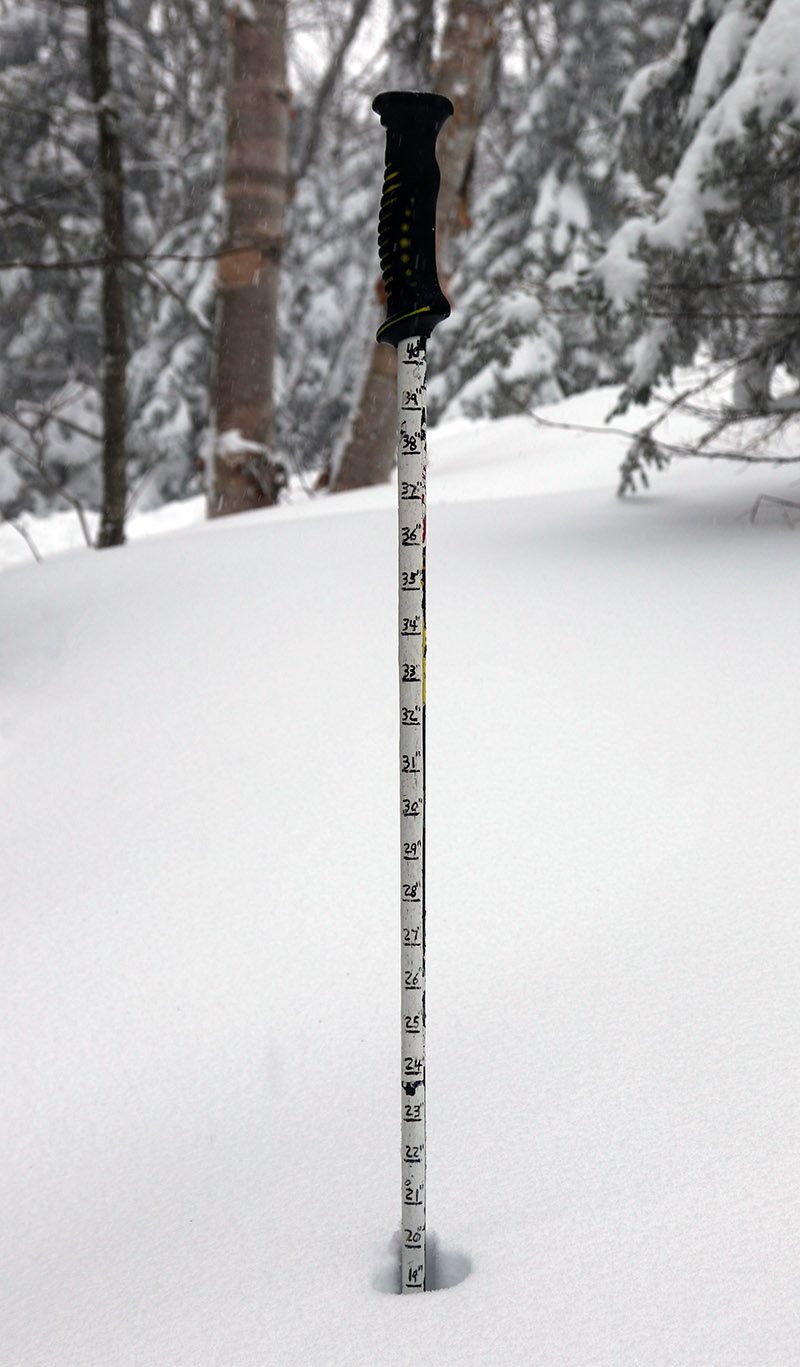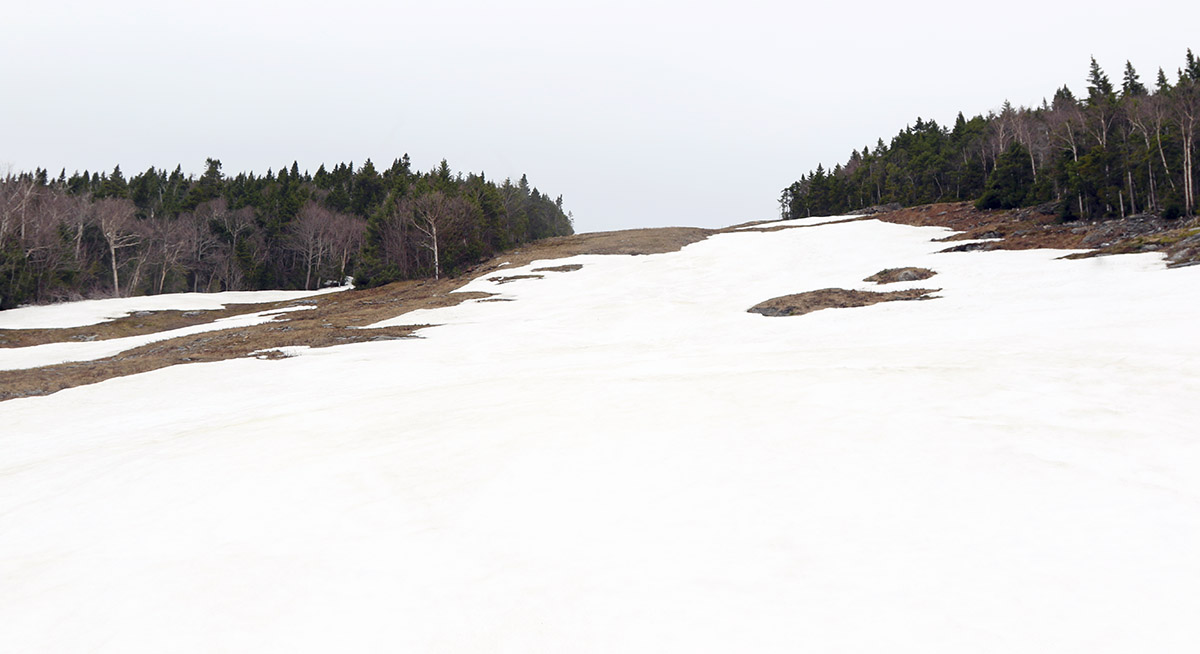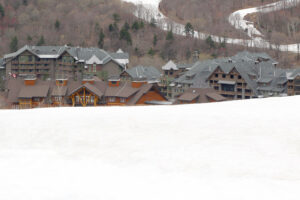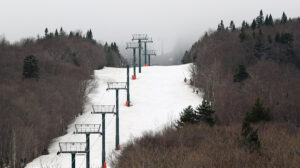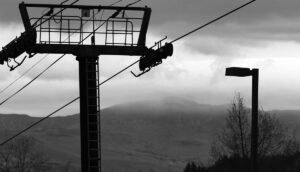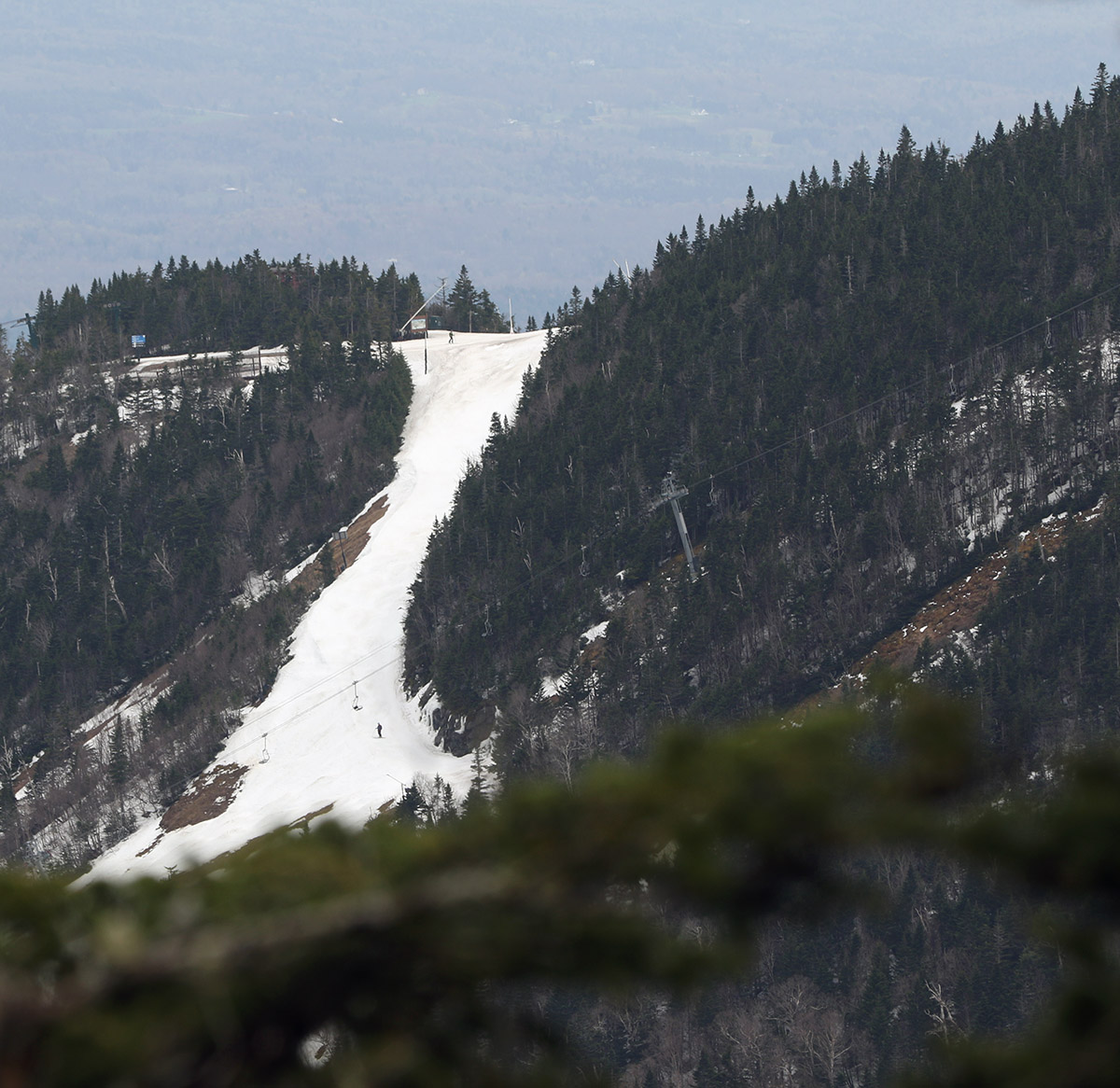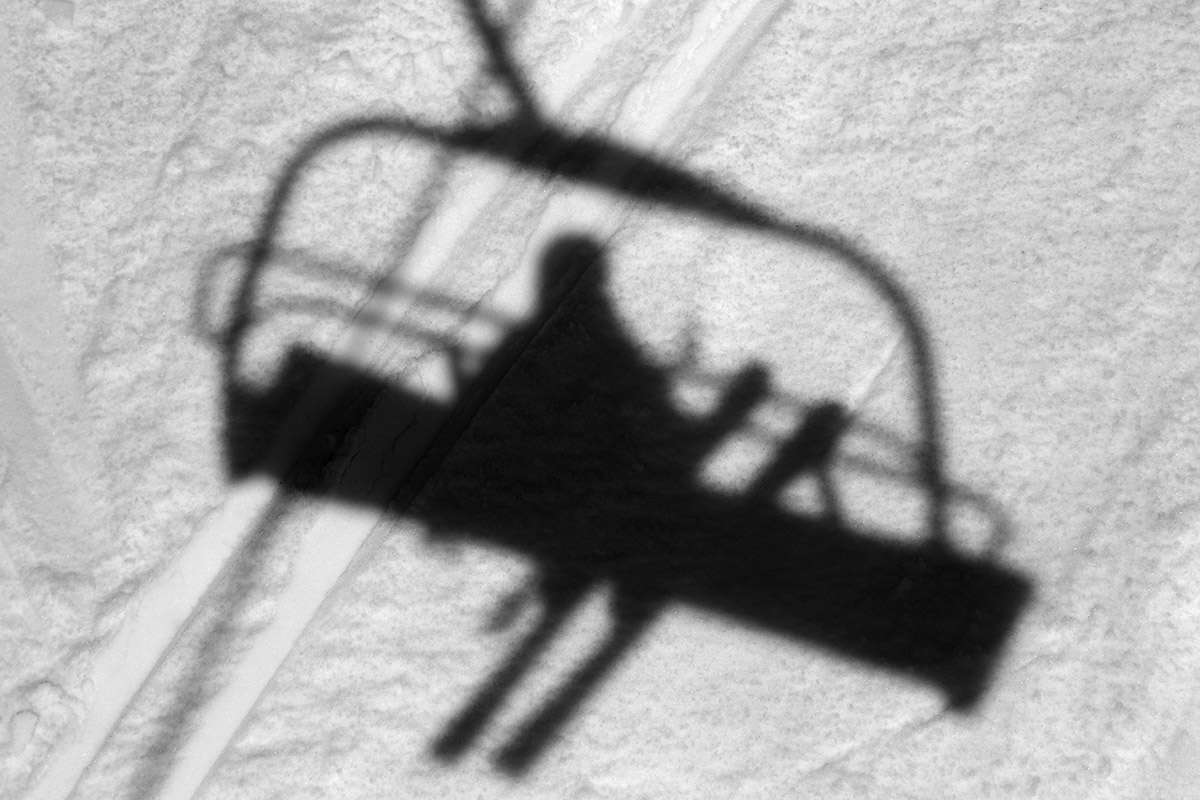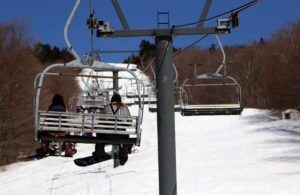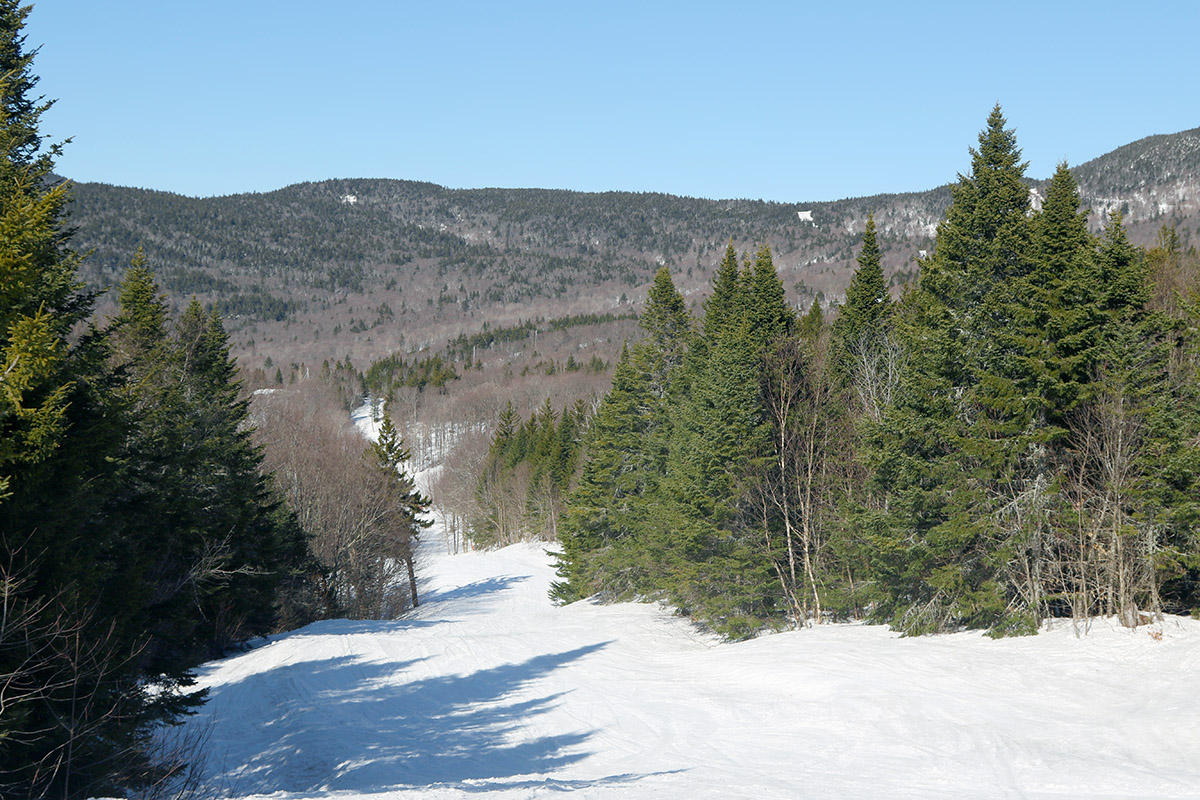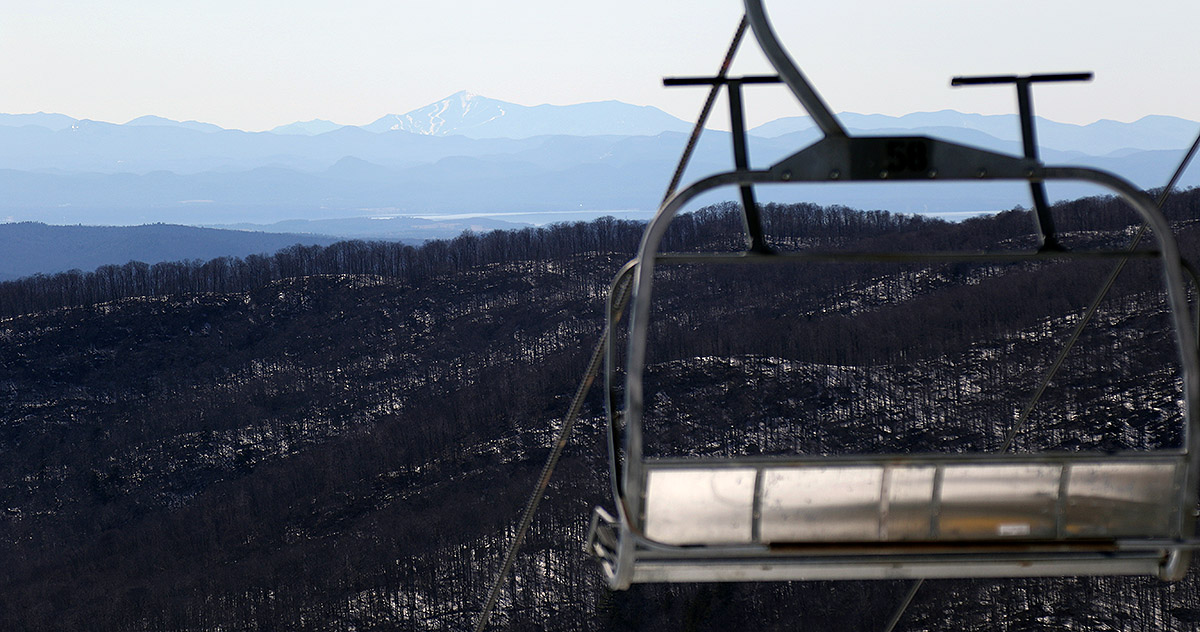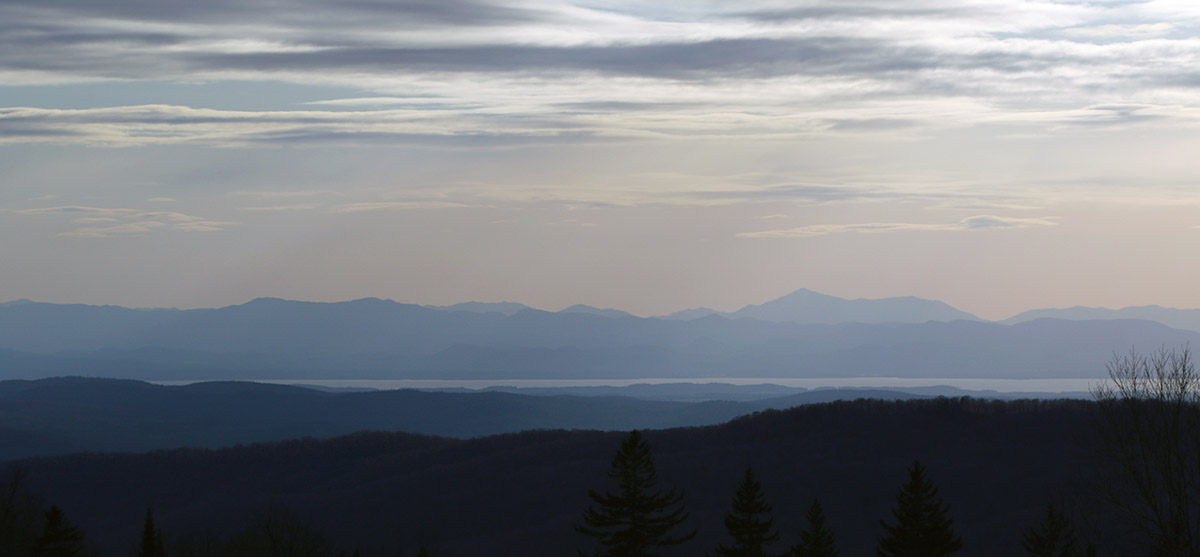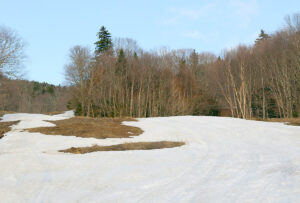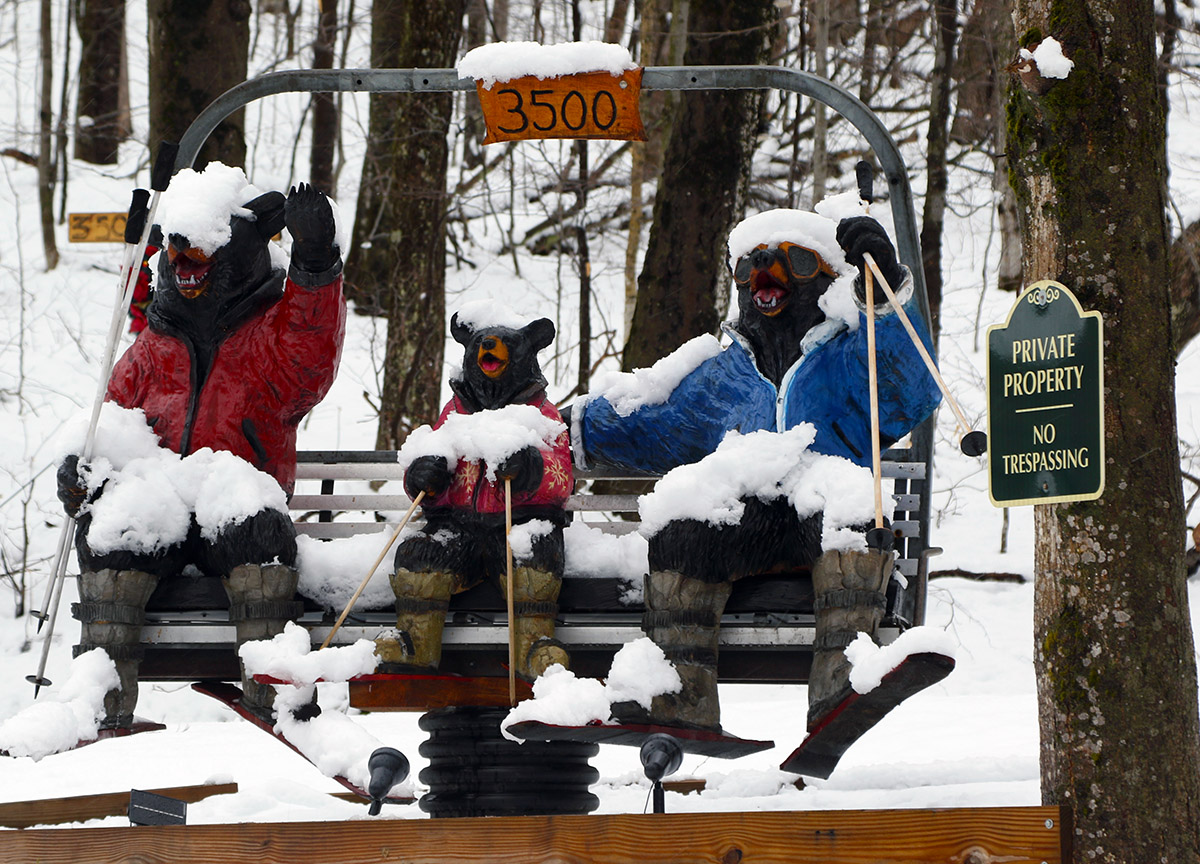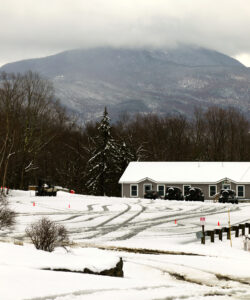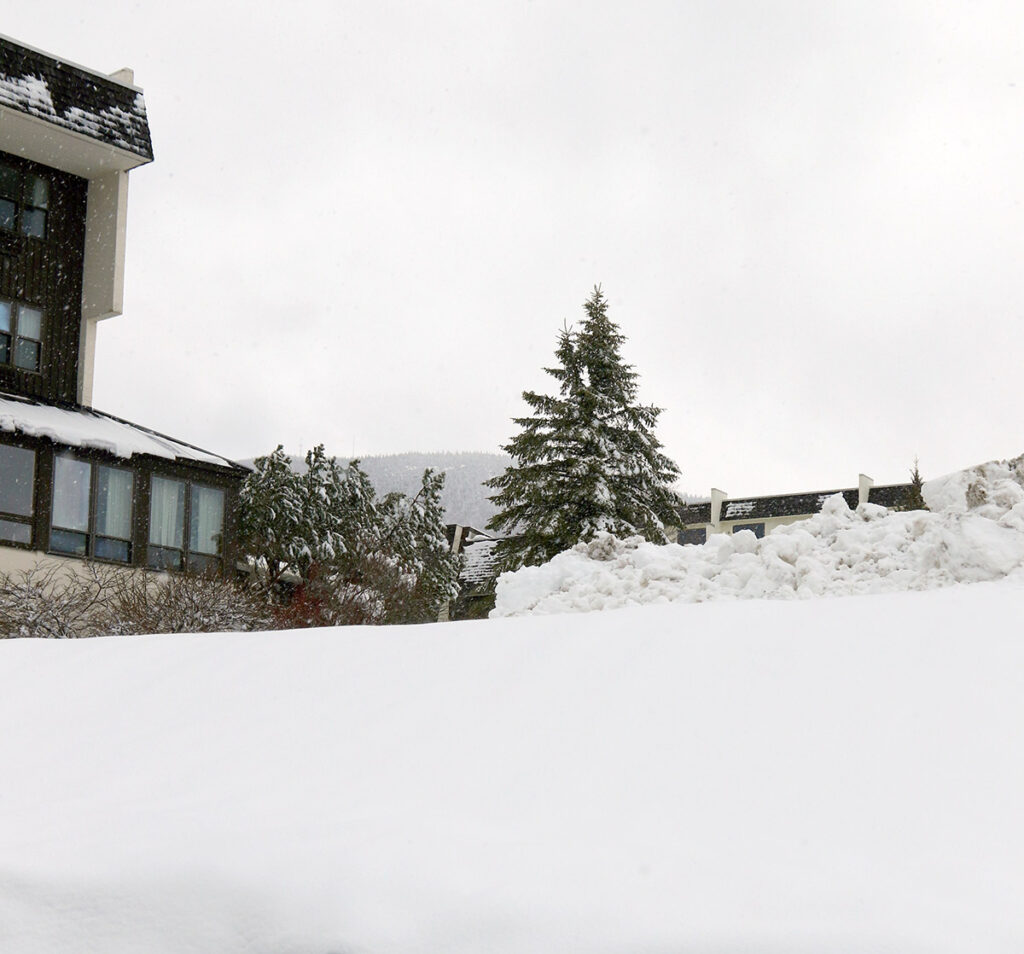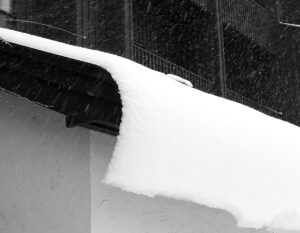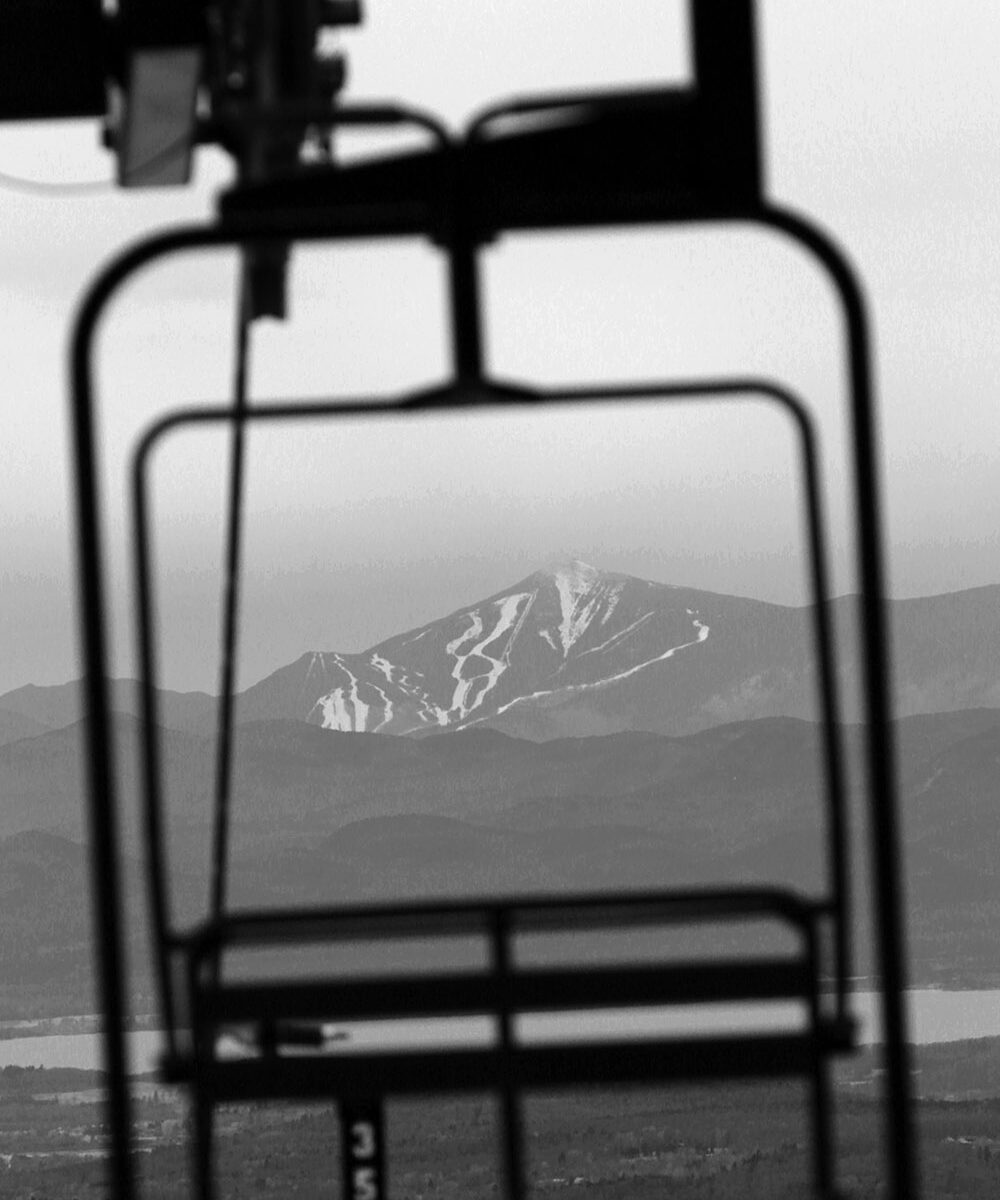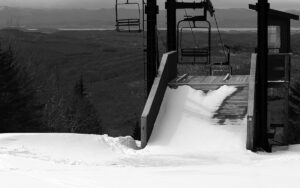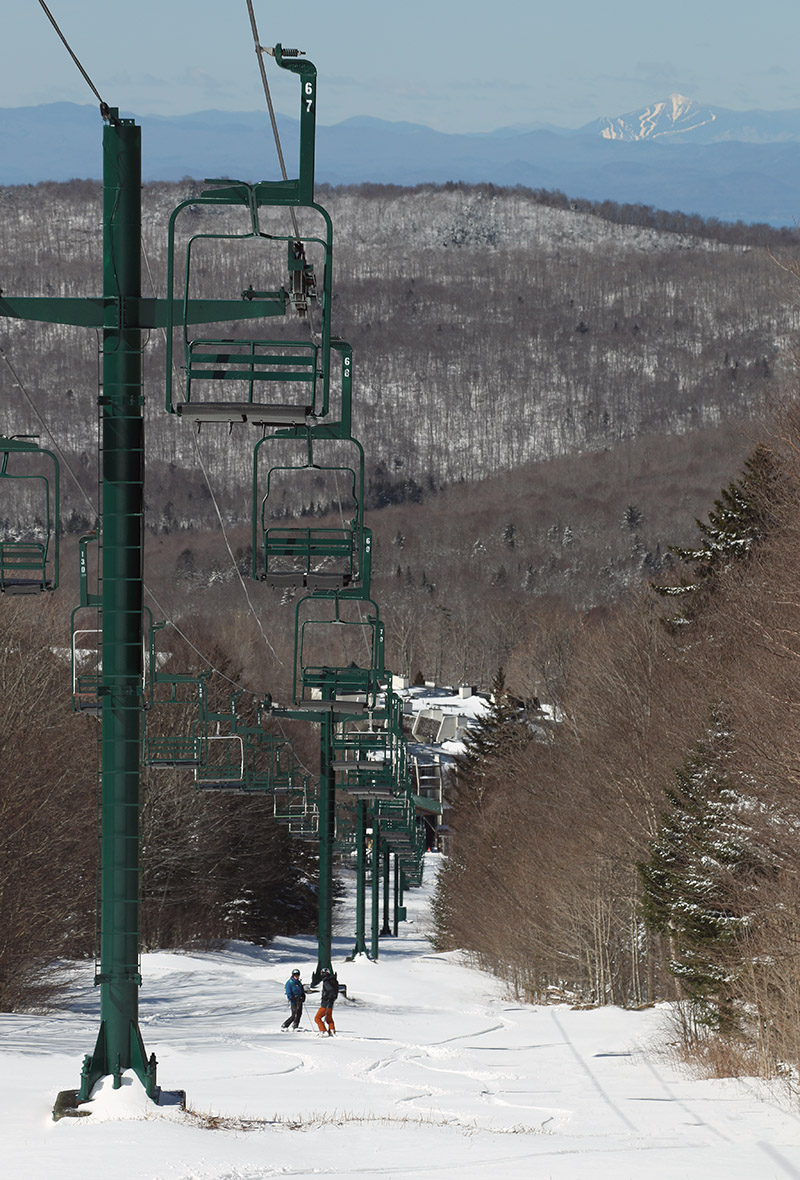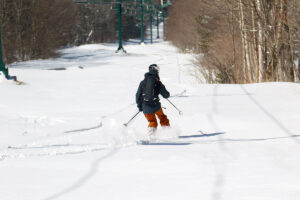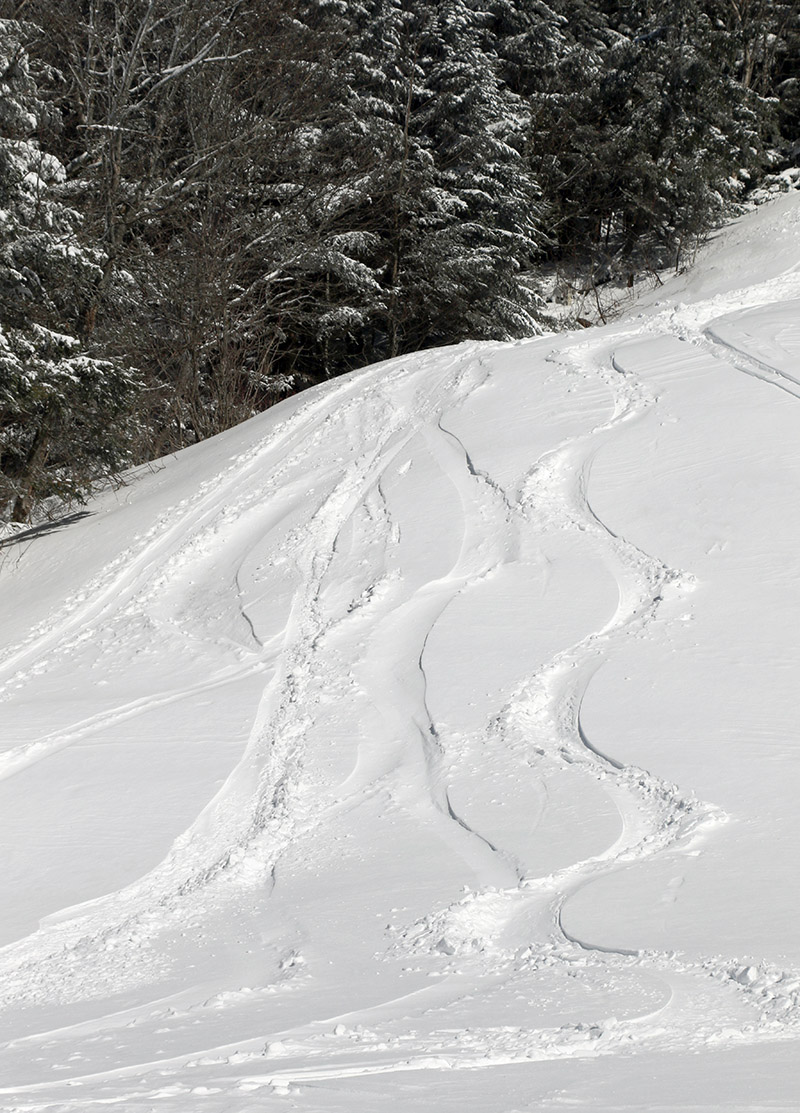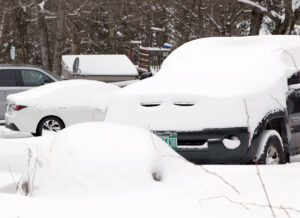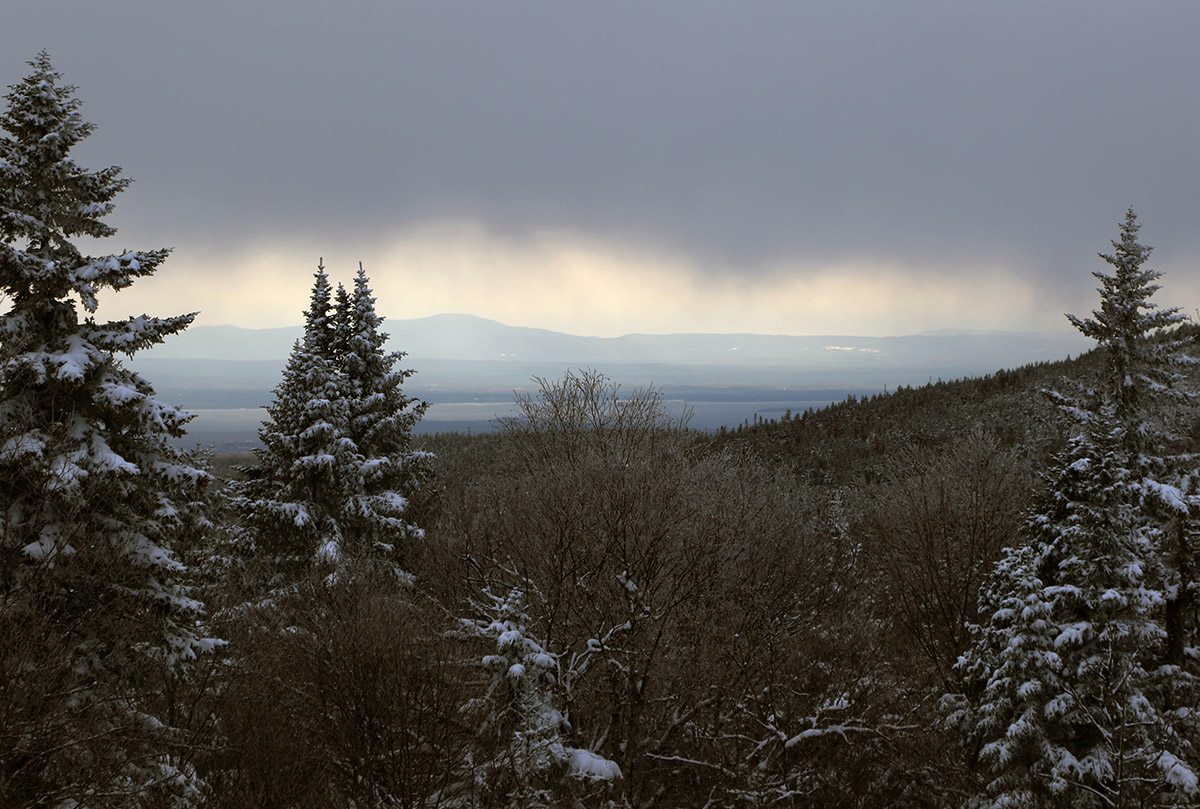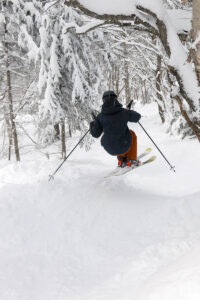
Today was the third day of our ongoing storm cycle, and Winter Storm Tormund has now brought Bolton’s storm total to 32 inches after another few overnight. E and I headed up for a morning session of turns with Ty, and it was a great chance to see how conditions were looking as the system began to wind down. Bolton wasn’t kicking off lift service from the Vista Quad until 10:00 A.M., so there was no need to rush up to the mountain first thing in the morning. As a bonus, the Wilderness Chair was opening at 10:30 A.M. for the first time since the storm cycle started, so that represented a nice opportunity to get into some fresher snow.
Snow was starting to mix with and change to rain in the valleys when we headed up to the mountain, but the snow line was still relatively low overall – certainly below 1,500’. More snow continued to fall all morning while we were out on the mountain, but it was of moderate to only occasionally heavy intensity. The clouds were also not as thick as they’d been earlier, and at times the weather was a mix of sun and snow, so the snowfall wasn’t accumulating as efficiently as it had over the previous couple of days. The upside of the thinner clouds was that the light intensity was much higher than it had been, so it made for some easier action photography. There was some wind when we first arrived up at the resort, and it really set up an overly wintry feel, but those winds dissipated before too long even up near the summits, and it started to feel more like a late-season ski day.
“Today was the third day of our ongoing storm cycle, and Winter Storm Tormund has now brought Bolton’s storm total to 32 inches after another few overnight.”
Since temperatures had come down overnight, the new accumulations of snow were once again drier than what had been falling yesterday afternoon, so like I’d experienced yesterday morning during my tour at Timberline, the quality of the powder this morning was better than it was in the afternoon. It does show the importance of typically getting out early for powder as we move through April, since the sunlight intensity is growing stronger, and it more easily affects the quality of the snow.
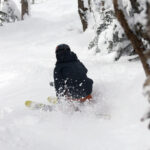 I brought E and Ty for a run through Vista Glades, since it had been so nice yesterday afternoon, and it delivered once again. Up at those elevations around 3,000’, the snowfall has been quite dry at any time of day, so you’re really getting some of the best conditions. We spent the rest of our session on Wilderness, taking advantage of all the new terrain it offered, and the lower traffic definitely helped supply a lot more fresh snow. Bolton Outlaw was skiing great, we had some nice turns in the Outlaw Woods, and a couple of great runs in the whole length of Wilderness Woods. We explored some of the tree skiing terrain to the skier’s left of Peggy Dow’s that was really nice, and that’s a place I don’t visit too often.
I brought E and Ty for a run through Vista Glades, since it had been so nice yesterday afternoon, and it delivered once again. Up at those elevations around 3,000’, the snowfall has been quite dry at any time of day, so you’re really getting some of the best conditions. We spent the rest of our session on Wilderness, taking advantage of all the new terrain it offered, and the lower traffic definitely helped supply a lot more fresh snow. Bolton Outlaw was skiing great, we had some nice turns in the Outlaw Woods, and a couple of great runs in the whole length of Wilderness Woods. We explored some of the tree skiing terrain to the skier’s left of Peggy Dow’s that was really nice, and that’s a place I don’t visit too often.
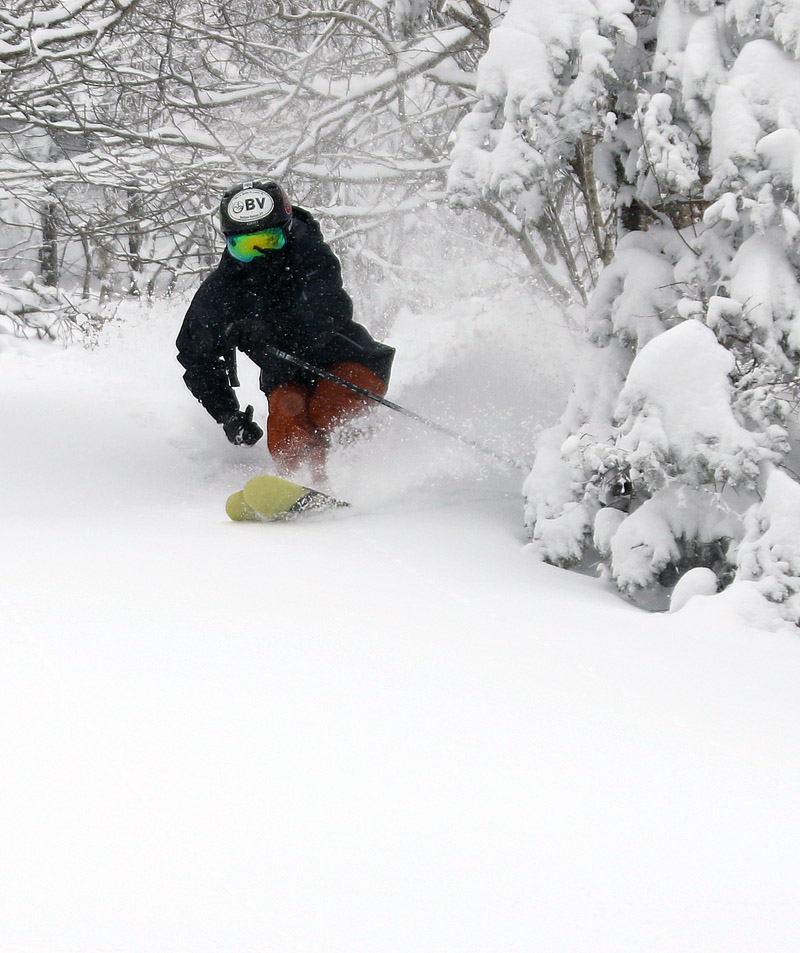
The freezing level seemed to be climbing as our session continued. Toward the end of the morning, on each run it seemed that the snow began to get wetter at a higher elevation. It did keep snowing all morning, but it was comfortable with the lack of wind and there was certainly an “April” feel to the storm today because it didn’t have as much bite as a midwinter one. It looks like we’ll be moving out of the wintry conditions into more spring-like conditions in the coming days based on the forecast, so it should be fun to see how the snow changes. The snowpack should have some extra staying power after all these substantial late-season storms though.

